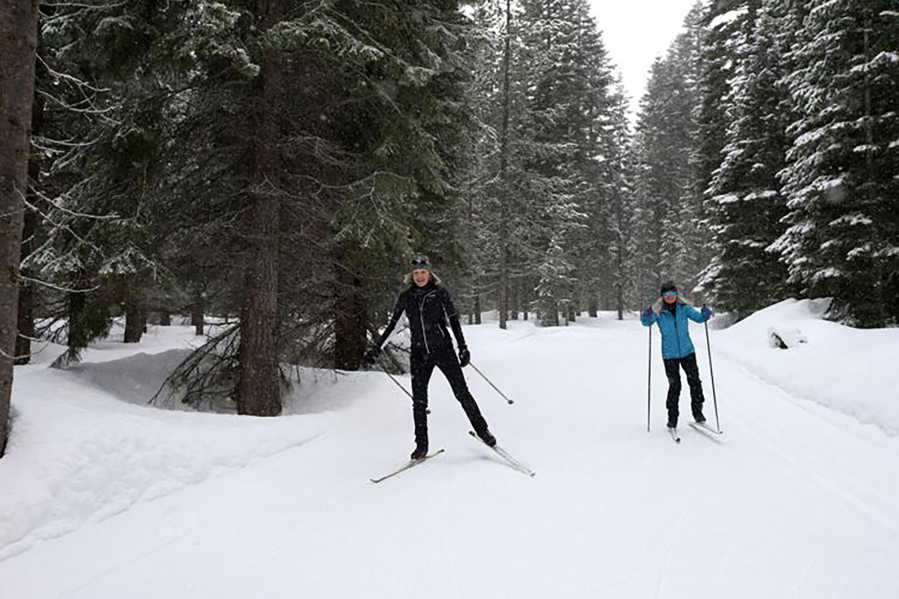BEND, Ore. — Over the years I have dabbled in cross-country skiing, but I’ve never fully committed to the sport as a frequent mode of winter recreation and exercise.
Years ago, I inherited some old classic ski gear, and I have enjoyed the trails at Virginia Meissner Sno-park and Mt. Bachelor Nordic Center several days each winter.
But I have always wanted to get into skate skiing, the faster version of the sport.
Most winters in Central Oregon offer enough breaks from the snow that I can squeeze in quite a few mountain bike rides and trail runs. But this winter the strong La Niña has made that somewhat difficult, and thus spurred my interest in skate skiing. Rather than dodging the snow, why not embrace it?
It was time to stop thinking about it and actually invest in some skate skiing gear.
Skate skiing, referred to as “freestyle” in nordic ski racing, is typically performed on a wide-open groomed trail and involves a V-step and glide motion, akin to ice skating. Classic skiing is usually done with the skis in set tracks and the skier employing an easier-to-grasp kick-and-glide motion.
Local shop owners seem to agree that classic skiing is still more popular, as it is easier to learn and you can go anywhere because a groomed trail is not necessary. But there’s no denying the popularity of skate skiing in Central Oregon, where fit folks of all ages engage in the full-body, more-bang-for-your-buck workout.
Early Sunday morning I loaded my new skate skiing boots and skis into my car and made the 30-minute drive to Meissner.
A few years ago, I got a skate skiing lesson from Dan Simoneau, a two-time Olympian in cross-country skiing and the former nordic director for the Mt. Bachelor Sports Education Foundation.
I tried to remember what I had learned as I set out on the groomed Tangent Loop amid light snowfall.
Alpine skiers sometimes come to skate skiing naturally because they usually have experience skating on their alpine skis to get back to the chairlifts. So I used that to my advantage as I skated along the flats and the slight downhills.
Skating uphill was a different story. It felt like I was going backward as my skis kept sliding out on me. “Oh yeah, this is why I don’t cross-country ski,” I thought.
But I stuck with it and eventually found a rhythm, even on the grueling uphill sections. I recalled what Simoneau described as the “kinetic energy” transferring from my core and up through my shoulders, arms and hands as I double-poled up a slight hill.
My background in alpine skiing seemed to help, as I felt comfortable on the flat and downhill stretches.
Skate skiing techniques include the V1 and the V2. In V1, skiers plant their poles on every other skate — for example, just when skating on the right ski. In V2, they plant on every skate, right and left. The V1 technique is best when skiing uphill, while V2 works to maintain balance on the flats. Focusing on the V1 helped me on the uphill stretches.
Skiing downhill on skate skis is easier than on classic skis because the skate skis are stiffer and torsionally constructed. They have no edges for carving, but I had significantly more control on the downhill while skate skiing.
Skate ski boots are stiffer, too, allowing the skier to push off to the side on each ski while skating.



